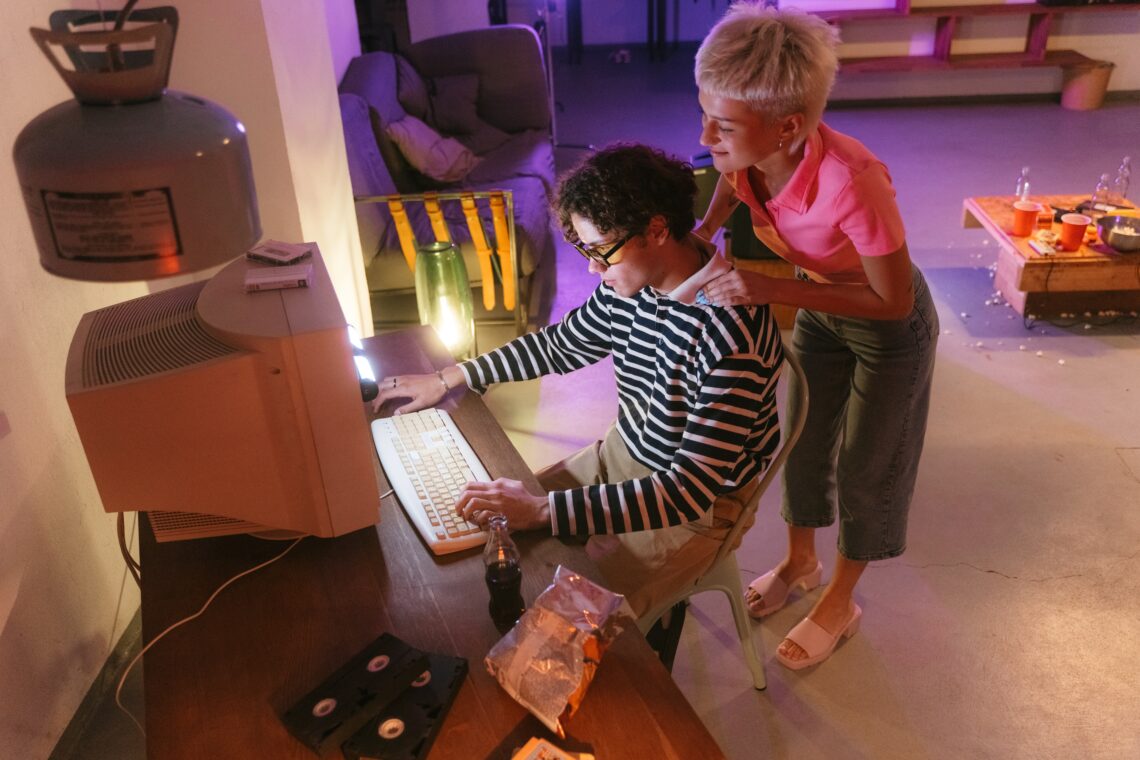
Growing up online: exploring identity and creativity in the 2000s
Tina Giang reminisces about 2009, when she was still a child in her pyjamas exploring her imagination through Microsoft Paint, Neopets and updating her latest YouTube profile design. There was no pressure to conform to a number of likes or the fleeting eyes of a short attention span.
Giang, now an OCAD University student in illustration, said her experiences were positive on these art platforms. “Everything felt simpler, so there was less of a feeling that I had to make posts or look or act a certain way.”
Mary Tran, a digital artist, was a teenager when she was active on Tumblr and was exposed to all forms of art and communities for the first time in 2014.
“You could tell a person’s personality just based on their page,” Tran said. “People got creative. Mine was full of different aesthetics, gifs and memes. It’s an embarrassing archive of my adolescence, but it’s who I was.”
On Tumblr, people were brought together in the spirit of expressing themselves without judgement. It was best known as an outlet for fandoms, experimental aesthetics and creative pages, where people could design their own blog with vibrant graphics and layouts.
Tran remembers being a part of a small K-pop and anime fandom, seeking comfort in a space that was not given to her in the real world. “Now it’s cool to be a geek. Before, it was shameful and many people had to hide behind anonymity to enjoy it in secret,” she said.
Many users on Tumblr shared this sentiment and created pages for people to openly express similar interests. An article by StudyBreaks named Tumblr the pioneer for safe spaces and inclusivity. For the LGBTQ community, it was the place for those who felt excluded to connect with others while supporting their artistic dreams.
Denise Santos, now a university student in their mid-20s, said that Tumblr was the only place to safely and proudly be bisexual as a teen. “There was a group for anyone and everyone queer. It’s what helped me form my identity today,” they said.
Since then, the website has manifested all kinds of cultures and identities, from fashion and music to politics. Many other websites and apps are now following its lead, such as TikTok; a social video app that is becoming a hotspot for trends and people worldwide.
Creativity in the internet jungle
In the late 2000s to 2010s, creative spaces continued to thrive. DeviantArt was the go-to online art exhibition of the world, where people got to freely display their creative work. Like Tumblr, it was a way for people who were marginalized and had little access to opportunities to finally be recognized.
Santos was not an active artist on DeviantArt but said that it was one of the places they looked to get exposure to art by people they had never heard of before.
“There was a sense that these people were real,” said Santos. “Artists could go crazy with their style and people would like it.”
Tran said that DeviantArt lived up to its name because it was full of untraditional art and ambiguity. Since the site was more niche, Tran said that the comments and feedback were more authentic compared to today and that is what made the site so attractive.
“You could easily get a lot more comments and these were often artists too, so critique was productive,” said Tran.
According to Artsy, forums on DeviantArt were made specifically for people to have in-depth conversations and receive feedback. It included a feature called the “shout box” that allowed for live stream conversation, which further granted the ability to speak to others around the world in real time.
“I don’t feel that with current apps now,” Tran said. “When I get comments on my art on Instagram they are mostly bots, and when someone likes your post you feel obligated to like back.”
Tran credits most of her success now as an artist to her interactions on early YouTube, where producing creative work was not a competition. While there was a desire to be validated by members of the community, she said that there was no pressure to produce anything grand or expensive.
“I started drawing people’s profile photos and I am still friends with some of these people, who are now professional artists or produce and mix music,” she said. “Many of these small groups started by young people [are] what created different jobs in the online creative field today.”
The transition to 2021 internet
For users trying to build a creative brand, it’s challenging to stand out in a sea of posts that gain popularity through hashtags like #follow4follow or #likeforlike. In competition for success, it is common to see people saying they miss older platforms. YouTuber Dan Howell openly expressed on Twitter, “I miss the old YouTube before everyone cared about money.” This resounded with many users, collecting 328,000 likes.
Now that the internet is more expansive than ever and social media is commercialized, former art communities are barely holding on. Most artists now have to turn to major social networks, creating portfolios or links to their latest Instagram post.
But Giang said that social media is not necessarily ruining brands, nor is it hindering online communities and identity building.
“Technology is always going to advance,” Giang said. “I don’t think it’s good for anyone to stay on social media too long, but people ultimately have a choice to use it and be authentic or not.”
In terms of art, Giang does not have a negative outlook for future creators. She said it is only going to get better from now on because of the number of opportunities social media has presented her.
“I have met so many people by reaching out to the small creative communities and businesses on Instagram,” Giang said. “I would not have known about these local people or events if I had not discovered them through the app.”
Giang is also an active user on TikTok and said there is a lot of potential in the app because its algorithm is based on the user’s interests. Finding people with similar passions is now just a scroll away on the For You Page.
Now with more access to information than before, it’s up to users to recreate the way they interact online. Although TikTok is often associated with young people and strange slang, Giang said it is creating a new path of authenticity and creativity for all kinds of people online.
About the author
Rebecca Benitez-Berona is a reporter at Youth Mind. She is passionate about social justice, creative writing, reading poetry and youth mental health. When she is not writing, she is exploring nature or trying out yet another new bubble tea shop.







